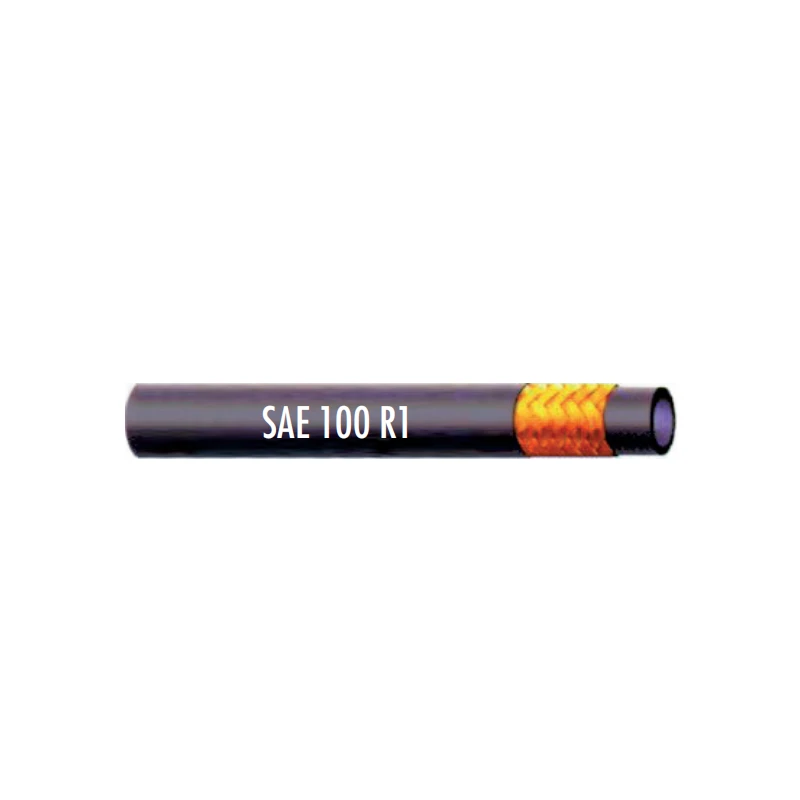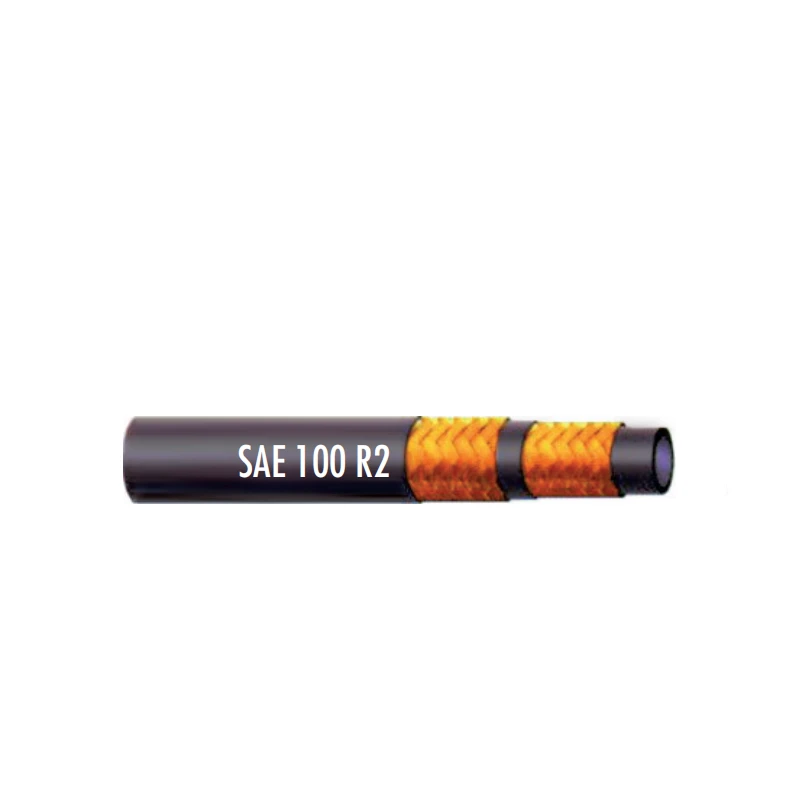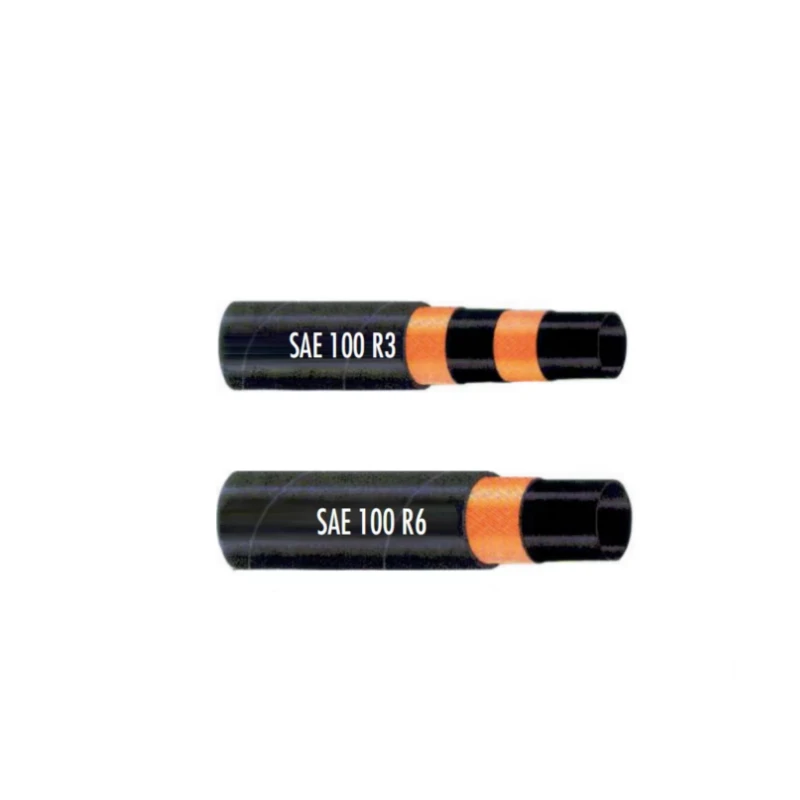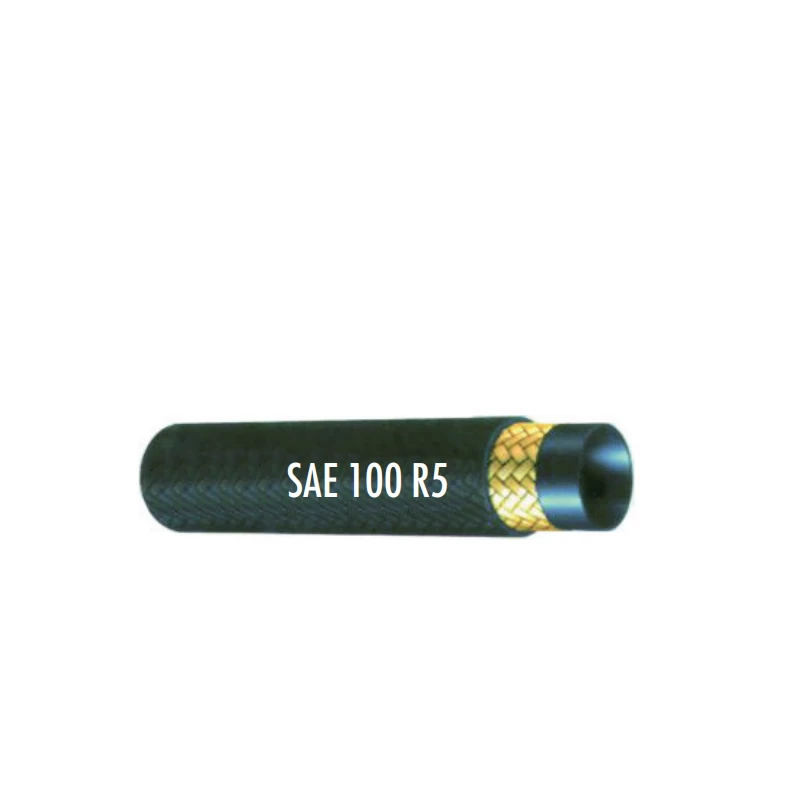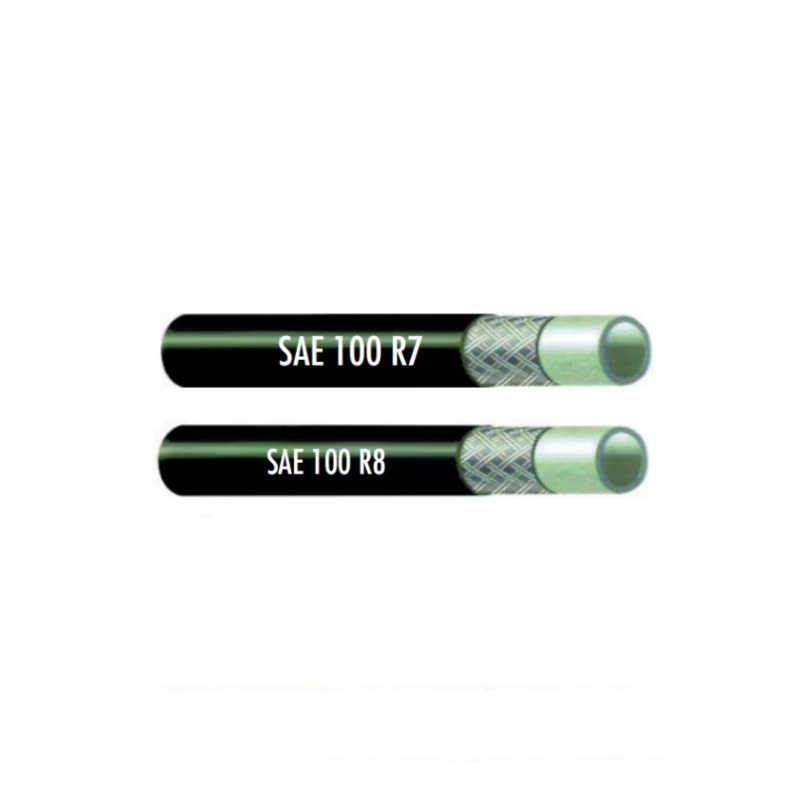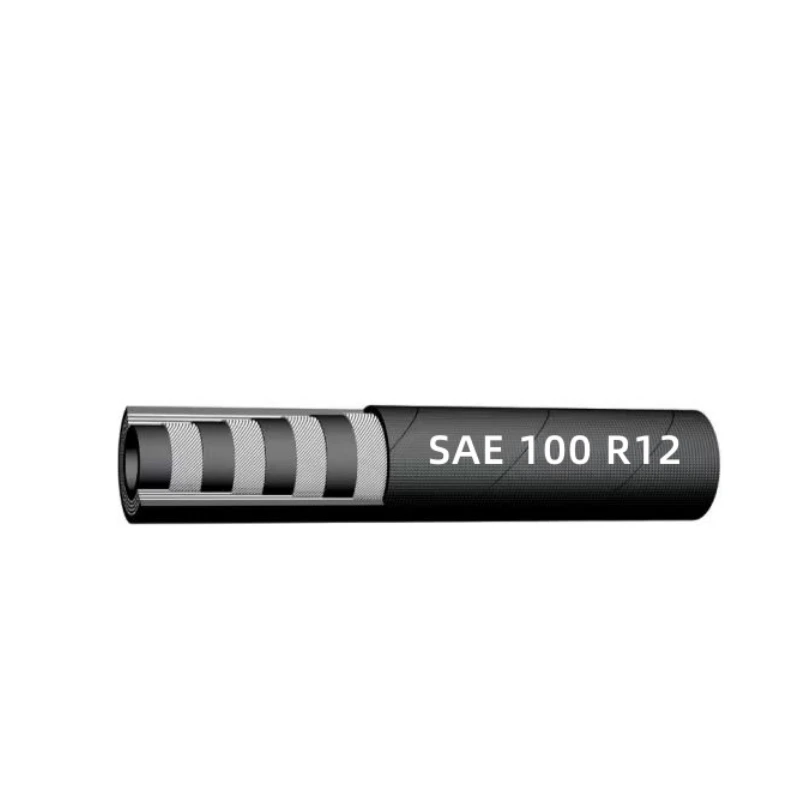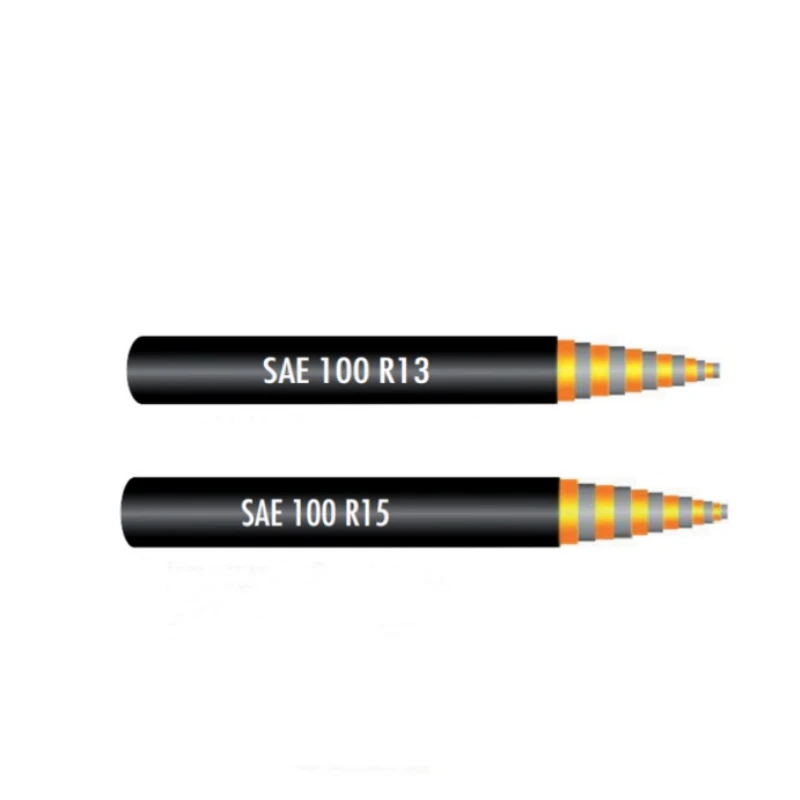
- Afrikaans
- Albanian
- Amharic
- Arabic
- Armenian
- Azerbaijani
- Basque
- Belarusian
- Bengali
- Bosnian
- Bulgarian
- Catalan
- Cebuano
- Corsican
- Croatian
- Czech
- Danish
- Dutch
- English
- Esperanto
- Estonian
- Finnish
- French
- Frisian
- Galician
- Georgian
- German
- Greek
- Gujarati
- haitian_creole
- hausa
- hawaiian
- Hebrew
- Hindi
- Miao
- Hungarian
- Icelandic
- igbo
- Indonesian
- irish
- Italian
- Japanese
- Javanese
- Kannada
- kazakh
- Khmer
- Rwandese
- Korean
- Kurdish
- Kyrgyz
- Lao
- Latin
- Latvian
- Lithuanian
- Luxembourgish
- Macedonian
- Malgashi
- Malay
- Malayalam
- Maltese
- Maori
- Marathi
- Mongolian
- Myanmar
- Nepali
- Norwegian
- Norwegian
- Occitan
- Pashto
- Persian
- Polish
- Portuguese
- Punjabi
- Romanian
- Russian
- Samoan
- scottish-gaelic
- Serbian
- Sesotho
- Shona
- Sindhi
- Sinhala
- Slovak
- Slovenian
- Somali
- Spanish
- Sundanese
- Swahili
- Swedish
- Tagalog
- Tajik
- Tamil
- Tatar
- Telugu
- Thai
- Turkish
- Turkmen
- Ukrainian
- Urdu
- Uighur
- Uzbek
- Vietnamese
- Welsh
- Bantu
- Yiddish
- Yoruba
- Zulu

ágú . 12, 2025 03:00 Back to list
Oxy Acetylene Hoses for Sale - High-Quality & Safe Welding Hoses
The Crucial Role of Oxygen Acetylene Hoses in Modern Industry
In diverse industrial landscapes, from precision metal fabrication to heavy construction, the integrity and performance of gas delivery systems are paramount. Among these, oxy acetylene hoses for sale stand as critical components, enabling safe and efficient welding, cutting, and brazing operations. These specialized hoses are engineered to safely transport oxygen and acetylene gases under high pressure, making them indispensable for applications requiring intense localized heat. The industry continues to see a rising demand for more durable, flexible, and safer hose solutions, driven by stricter safety regulations and the need for enhanced operational efficiency. Manufacturers are constantly innovating to meet these demands, focusing on superior materials and advanced manufacturing techniques to ensure optimal performance and longevity in challenging environments. This continuous evolution underscores the importance of selecting high-quality oxygen and acetylene hoses for any serious industrial application.
The market for oxygen and acetylene hoses is characterized by its emphasis on safety, performance, and compliance with international standards. End-users in sectors like shipbuilding, automotive repair, metallurgy, and petrochemicals rely heavily on these hoses for their daily operations. Current trends indicate a shift towards hoses with higher pressure ratings, improved abrasion and ozone resistance, and enhanced flame retardancy, reflecting the industry's commitment to mitigating risks. Furthermore, the integration of smart manufacturing processes allows for greater precision and consistency in hose production, ensuring that each product meets stringent quality control benchmarks. As technological advancements in welding and cutting equipment progress, the supporting infrastructure, particularly the acetylene hose and oxygen hose, must evolve concurrently to maintain compatibility and optimize performance.
Technical Parameters and Specifications of Oxygen Acetylene Welding Hose
Understanding the technical specifications of an acetylene welding hose is crucial for ensuring safe and effective operations. These hoses are designed with specific parameters to withstand the unique properties of oxygen and acetylene gases. Key parameters include working pressure, burst pressure, temperature range, and material composition. For instance, the working pressure, typically measured in PSI (pounds per square inch) or MPa (megapascals), defines the maximum continuous pressure the hose can safely handle. Burst pressure, significantly higher than working pressure, indicates the pressure at which the hose is expected to fail, providing a critical safety margin. The operating temperature range ensures the hose maintains its integrity under varying environmental conditions, preventing material degradation or embrittlement.
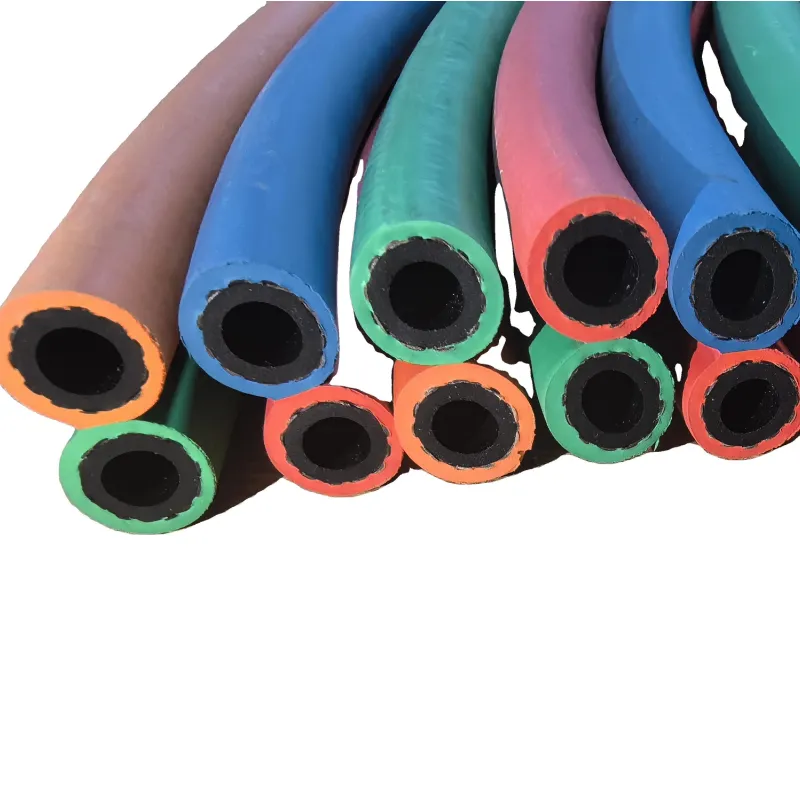
The construction of a high-quality oxy acetylene hose typically involves multiple layers, each contributing to its overall strength and durability. An inner tube, usually made of a synthetic rubber compound like SBR (Styrene Butadiene Rubber) or EPDM (Ethylene Propylene Diene Monomer), provides chemical resistance to the gases. This is reinforced by a robust textile braid, often high-tensile synthetic yarn, which provides the necessary pressure resistance. The outer cover, also made of a durable synthetic rubber, offers protection against abrasion, ozone, UV radiation, and general wear and tear in harsh industrial environments. Compliance with standards such as ISO 3821 (for rubber hoses for welding, cutting, and allied processes) is a testament to the hose's adherence to stringent safety and performance requirements.
Typical Product Specifications: Oxygen Acetylene Welding Hose
| Parameter | Oxygen Hose (Blue/Green) | Acetylene Hose (Red) | Common Standard Ranges |
|---|---|---|---|
| Inner Tube Material | Synthetic Rubber (SBR/EPDM) | Synthetic Rubber (SBR/EPDM) | Oil and Gas resistant |
| Reinforcement | High-tensile Synthetic Yarn Braid | High-tensile Synthetic Yarn Braid | Excellent pressure resistance |
| Outer Cover Material | Synthetic Rubber (EPDM/CR) | Synthetic Rubber (EPDM/CR) | Abrasion, ozone, weather resistant |
| Working Pressure (WP) | 20 Bar (290 PSI) | 20 Bar (290 PSI) | Typically 20-30 Bar |
| Burst Pressure (BP) | 60 Bar (870 PSI) | 60 Bar (870 PSI) | 3x WP minimum |
| Temperature Range | -20°C to +80°C | -20°C to +80°C | Varies by material, typically -30°C to +90°C |
| Inner Diameter (ID) Range | 6mm to 19mm | 6mm to 19mm | Common: 6mm, 8mm, 10mm |
| Standards Compliance | ISO 3821, EN 559 | ISO 3821, EN 559 | Also AS/NZS 1335, BS EN ISO 3821 |
The precise selection of an oxygen and acetylene hoses for sale model depends on the specific application's pressure requirements, environmental conditions, and the gases being conveyed. Always consult product datasheets and ensure compliance with local and international safety regulations to guarantee optimal performance and prevent industrial accidents.
The Manufacturing Process of High-Performance Oxy Acetylene Hoses
The production of top-tier oxy acetylene hoses for sale is a sophisticated process demanding precision and adherence to rigorous quality control. It typically involves several critical stages, beginning with material selection. Only high-grade synthetic rubbers, such as SBR, EPDM, or Nitrile Butadiene Rubber (NBR), are chosen for their excellent chemical resistance to oxygen and acetylene, as well as their resilience to extreme temperatures and pressures. The manufacturing journey often starts with the extrusion of the inner tube, where the selected rubber compound is forced through a die to form a continuous, seamless tube of the desired inner diameter. This seamless construction is vital for preventing gas leaks and ensuring consistent flow, contributing significantly to the overall safety of the acetylene torch hoses.
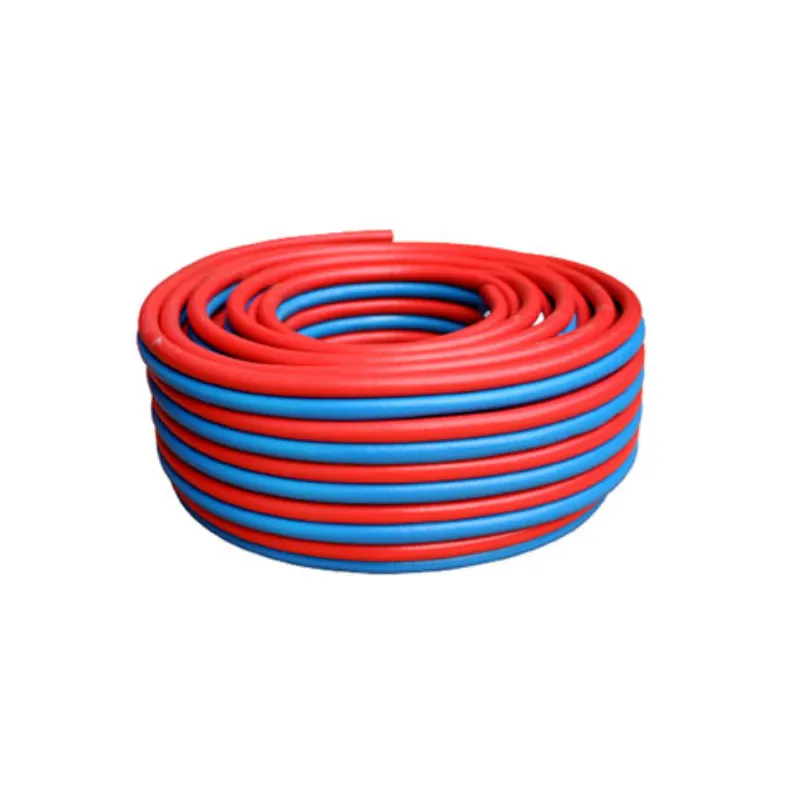
Following the inner tube extrusion, the reinforcement layer is applied. This is commonly achieved through a braiding or spiraling process, where high-tensile synthetic yarns, like polyester or aramid fibers, are precisely wound around the inner tube. This reinforcement is paramount for giving the hose its burst strength and resistance to pressure fluctuations, which are common in welding and cutting applications. CNC-controlled winding machines ensure uniform tension and density of the reinforcement layer, eliminating weak points. After reinforcement, the outer cover is extruded over the reinforced core. This exterior layer is specially formulated to provide superior resistance to abrasion, ozone, UV light, chemicals, and welding spatter, significantly extending the service life of the acetylene hose even in the most demanding industrial environments.
The final and equally critical stage is vulcanization, a process where the rubber materials are heated under pressure, causing them to cross-link and achieve their final desired physical properties, including elasticity, strength, and durability. Post-vulcanization, every batch of oxygen and acetylene hoses undergoes rigorous testing in accordance with international standards like ISO 3821 and EN 559. These tests include burst pressure tests, flexibility tests, ozone resistance tests, and adhesion tests between layers, ensuring that each hose meets or exceeds performance requirements. This meticulous manufacturing and testing regimen ensures a robust product with an extended service life, typically ranging from 5 to 10 years depending on usage and maintenance, delivering exceptional value in industries such as petrochemicals, metallurgy, shipbuilding, and construction, where reliability and corrosion resistance are non-negotiable.
Application Scenarios and Technical Advantages
The versatility of oxy acetylene hoses for sale makes them essential in a myriad of industrial and commercial applications where precise and controlled heat is required. In metal fabrication workshops, they facilitate efficient cutting of steel plates and precision welding of components. The construction industry relies on them for on-site cutting of rebar and structural elements, while automotive repair shops utilize them for chassis repair and exhaust system modifications. Beyond these, their applications extend to heavy industries like shipbuilding for hull assembly and repair, foundries for cutting risers and sprues, and mining operations for equipment maintenance and repair in challenging environments. The ability of these hoses to deliver a consistent and controlled flow of gases under varying conditions makes them highly adaptable.
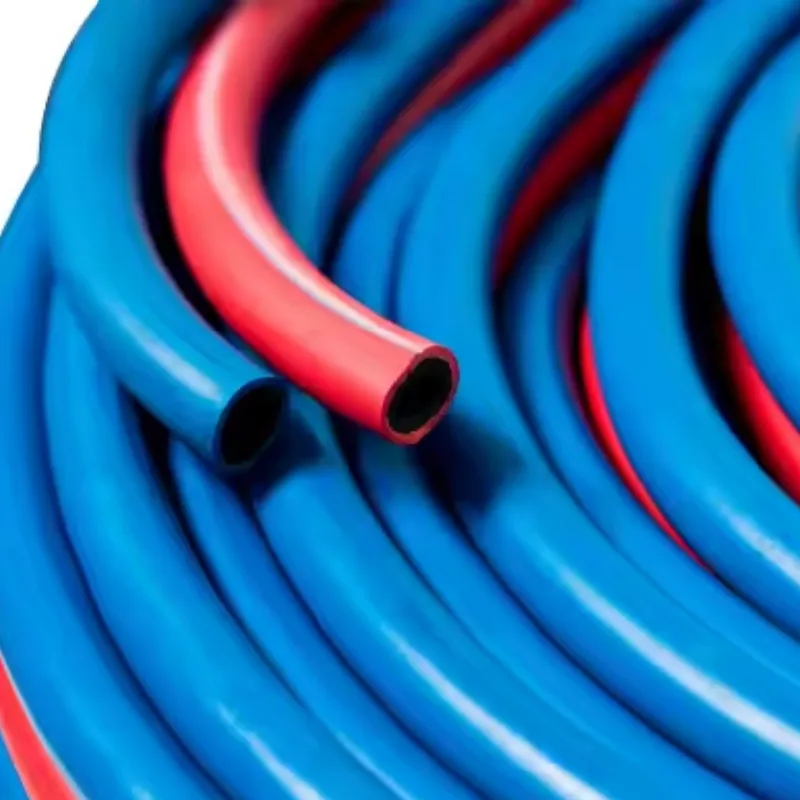
The technical advantages of well-engineered oxygen and acetylene hoses for sale are manifold, directly contributing to enhanced operational safety and efficiency. Their multi-layered construction, incorporating a robust synthetic rubber inner tube, high-tensile textile reinforcement, and a durable outer cover, ensures exceptional resistance to kinking, crushing, and twisting. This robust design significantly minimizes the risk of gas leaks, which are a major safety concern in high-pressure gas applications. Furthermore, the specialized rubber compounds used in the outer cover provide superior resistance to abrasion, ozone, UV radiation, and common industrial chemicals, extending the service life of the hoses and reducing the frequency of replacements.
In terms of performance, the optimized internal bore design of quality oxy acetylene hose ensures minimal pressure drop, allowing for efficient gas flow and consistent flame characteristics during welding or cutting operations. This contributes to energy efficiency by reducing the demand on gas regulators and cylinders. Moreover, the inherent flexibility of these hoses, even in cold conditions, allows for easy maneuverability around complex workpieces and in confined spaces, enhancing worker productivity and reducing fatigue. For sectors such as petrochemicals and water supply/drainage, where equipment is exposed to corrosive elements, the inherent corrosion resistance of the hose materials is a crucial advantage, safeguarding the integrity of the gas delivery system and preventing costly downtime associated with material degradation.
Customization Solutions and Application Cases
For specialized industrial applications, standard acetylene welding hose configurations may not always suffice. Leading manufacturers offer comprehensive customization solutions to meet unique operational demands. This includes variations in inner diameter, length, and working pressure ratings to perfectly match specific equipment and application requirements. For instance, in automated welding cells, custom lengths can optimize cable management and reduce clutter, improving safety and workflow. Moreover, hoses can be manufactured with specific outer cover materials to enhance resistance against particular chemicals, extreme temperatures, or specialized abrasive environments. For example, in shipbuilding, hoses might require additional flame-retardant properties to comply with maritime safety standards, while in mining, enhanced cut and crush resistance are paramount for durability against harsh terrain.
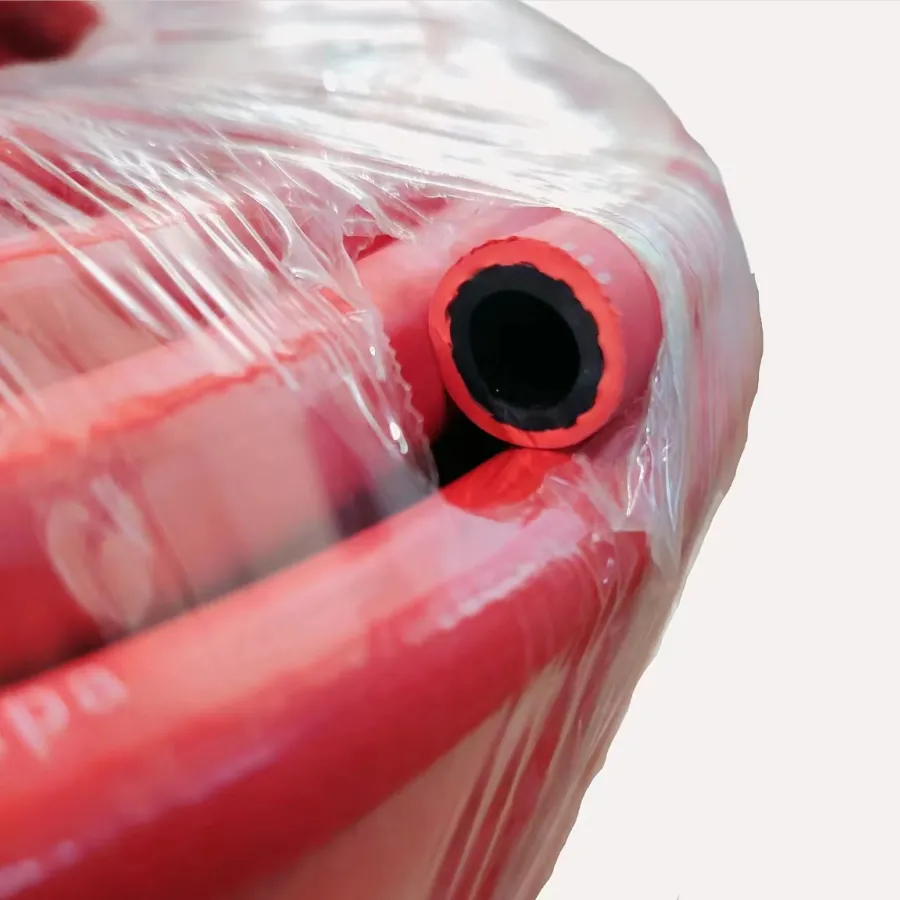
One notable application case involved a large-scale infrastructure project where bespoke oxy acetylene hoses for sale were required for bridge construction. The project demanded hoses capable of operating reliably in sub-zero temperatures while maintaining flexibility and resisting abrasion from concrete and steel structures. A customized solution involving a specialized cold-resistant EPDM compound for both inner and outer layers, coupled with a robust double-braid reinforcement, ensured uninterrupted operations and extended hose life, significantly reducing replacement costs and downtime. Another example includes a client in the automotive manufacturing sector who needed an acetylene hose with enhanced resistance to oil and lubricants for their production line, a common contaminant in such environments. The solution involved a Nitrile-based inner tube and cover, specifically engineered to withstand hydrocarbon exposure without degradation, ensuring consistent performance and safety.
These case studies highlight the value of collaborating with manufacturers capable of offering tailored solutions. By understanding the intricate details of each application, from environmental factors to operational pressures, manufacturers can design and produce oxy acetylene hoses for sale that not only meet but exceed performance expectations. This collaborative approach ensures that businesses receive products perfectly aligned with their specific needs, leading to improved operational efficiency, enhanced safety, and long-term cost savings due to reduced maintenance and replacement cycles.
Choosing the Right Manufacturer: Key Considerations for Oxygen Acetylene Hoses
When sourcing oxygen and acetylene hoses for sale, the choice of manufacturer significantly impacts product quality, safety, and long-term performance. It's imperative to look beyond initial cost and consider factors such as expertise, adherence to standards, and commitment to customer support. A reputable manufacturer will demonstrate deep expertise in rubber compounding and hose design, backed by years of experience in the industry. Their manufacturing processes should incorporate advanced technologies, such as precision extrusion and automated braiding, ensuring consistency and minimizing defects. Certifications like ISO 9001 for quality management systems are strong indicators of a manufacturer's commitment to consistent quality.
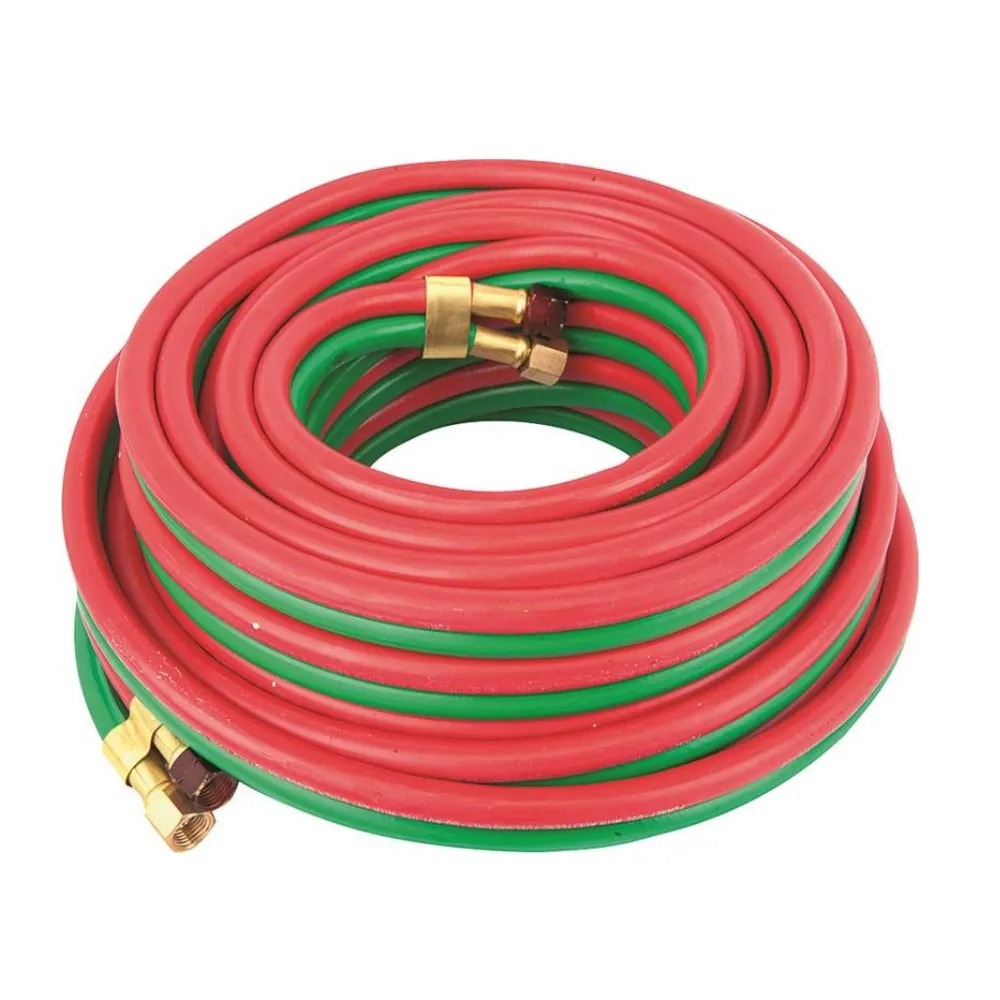
Moreover, an authoritative manufacturer will ensure their acetylene torch hoses comply with relevant international and regional safety standards, such as ISO 3821, EN 559, and any specific national regulations (e.g., AS/NZS 1335). This compliance is not just a formality; it signifies that the products have undergone rigorous testing and meet established safety benchmarks for burst pressure, abrasion resistance, and flame retardancy. Requesting test data, material safety datasheets (MSDS), and product specification sheets can provide objective evidence of a product's capabilities. Service longevity is also a key indicator of reliability; manufacturers with a long track record of successful installations and satisfied clients typically offer more trustworthy products.
Trustworthiness extends beyond product quality to the manufacturer's overall support infrastructure. This includes clear communication regarding delivery cycles, which are crucial for project planning and inventory management. A strong warranty commitment reflects confidence in their product's durability and performance. Furthermore, robust customer support, including technical assistance for product selection, installation guidance, and troubleshooting, is invaluable for B2B clients. Companies that offer comprehensive after-sales service and have established FAQ modules for common queries demonstrate a dedication to client success, fostering long-term partnerships built on reliability and mutual trust. Choosing such a partner ensures that your investment in oxy acetylene hoses for sale yields maximum safety and operational benefits.
FAQs on Oxygen Acetylene Welding Hoses
Q1: What is the typical lifespan of an oxygen and acetylene hoses?
The typical lifespan of an oxy acetylene hose can vary significantly based on usage intensity, storage conditions, and environmental exposure. However, with proper care, maintenance, and adherence to recommended operating parameters, a high-quality hose manufactured to ISO 3821 standards can last anywhere from 5 to 10 years. Regular inspection for cuts, abrasions, blistering, or kinking is crucial to identify potential failure points and ensure continued safe operation. It's also recommended to replace hoses proactively if any signs of wear or damage are observed, even if they are within their expected lifespan, to prevent gas leaks or catastrophic failures.
Q2: How do I ensure I'm purchasing a safe and compliant acetylene hose?
To ensure you're purchasing a safe and compliant acetylene hose, always verify that the product is manufactured according to international standards such as ISO 3821 (for rubber hoses for welding, cutting, and allied processes) or EN 559. Look for clear markings on the hose itself that indicate the standard, manufacturer's name, and pressure ratings. Request product data sheets and certifications from the supplier. A reputable manufacturer will readily provide these documents. Additionally, consider the manufacturer's reputation, their experience in the industry, and their commitment to quality management systems like ISO 9001.
Q3: What are the key differences between an oxygen hose and an acetylene hose?
While both are vital components of oxy acetylene hoses for sale sets, oxygen and acetylene hoses have distinct characteristics. Oxygen hoses are typically blue or green, while acetylene hoses are red. More importantly, their inner tube materials are specially formulated for the specific gas they carry: acetylene hoses are designed to be resistant to the solvent used in acetylene cylinders (acetone), which could degrade standard rubber. Oxygen hoses are designed to withstand high-pressure oxygen, which can accelerate combustion. They are rarely interchangeable due to safety considerations and material compatibility. Proper color coding prevents accidental cross-connection, a critical safety measure.
Q4: What kind of warranty and customer support can I expect for these hoses?
Reputable manufacturers typically offer a warranty period ranging from 1 to 2 years against manufacturing defects for their acetylene welding hose products. This warranty usually covers material and workmanship flaws under normal operating conditions. Beyond the warranty, expect comprehensive customer support including technical assistance for product selection, guidance on proper installation and maintenance, and efficient handling of any performance issues. Many suppliers also offer detailed product manuals, online resources, and responsive customer service teams to address inquiries and provide solutions.
Conclusion: Investing in Reliable Oxy Acetylene Hoses for Superior Performance
The selection of high-quality oxy acetylene hoses for sale is not merely a purchasing decision; it is a critical investment in operational safety, efficiency, and long-term cost-effectiveness. As detailed, these specialized hoses are designed with precision and undergo rigorous manufacturing processes and stringent testing to ensure they can withstand the demanding conditions of industrial welding and cutting applications. From their multi-layered construction and selection of advanced synthetic rubbers to adherence to international standards like ISO 3821, every aspect is engineered to deliver reliable performance and minimize risks in high-pressure gas environments.
For B2B decision-makers and technical personnel, prioritizing hoses that offer superior flexibility, excellent resistance to abrasion and ozone, and a proven track record of durability is paramount. The benefits extend beyond mere compliance, contributing to reduced downtime, lower replacement costs, and most importantly, a safer working environment for operators handling volatile gases. By partnering with manufacturers who demonstrate expertise, authority, and trustworthiness through their product quality, certifications, and comprehensive customer support, businesses can confidently optimize their gas delivery systems. Investing in the right oxygen and acetylene hoses ensures that critical operations, whether in metallurgy, construction, or petrochemicals, proceed with maximum efficiency and unwavering safety.
References
- International Organization for Standardization. ISO 3821: Rubber hoses for welding, cutting and allied processes.
- European Committee for Standardization. EN 559: Rubber hoses and hose assemblies for welding, cutting and allied processes.
- American Society of Mechanical Engineers. ASME B31.1: Power Piping.
- National Fire Protection Association. NFPA 51B: Standard for Fire Prevention During Welding, Cutting, and Other Hot Work.
Latest News
Steel Wire Reinforced Hydraulic Hose SAE 100 R1 / EN853 1SN S
NewsOct.17,2024
Two Layers Steel Wire Reinforced Hydraulic Hose SAE 100 R2 / EN853 2SN
NewsSep.03,2024
Textile Braid Reinforced Hydraulic Hose SAE100 R3+R6
NewsSep.03,2024
Textile Reinforced Hydraulic oil Suction Hose with embedded Steel Wire SAE 100 R4
NewsSep.03,2024
Single Wire Braid and Textile Covered Hydraulic Hose SAE 100 R5
NewsSep.03,2024
High Pressure Thermoplastic Hydraulic Hose SAE 100 R7 / EN855 R7 - SAE 100 R8 / EN855 R8
NewsSep.03,2024
Heavy Duty Four-layer Steel Wire Spiral Reinforced Hydraulic Hose SAE100R9+R10+R12
NewsSep.03,2024
Heavy Duty Multi-layer Steel Wire Reinforced Hydraulic Hose SAE100R13 SAE100R15
NewsSep.03,2024
Latest Products
